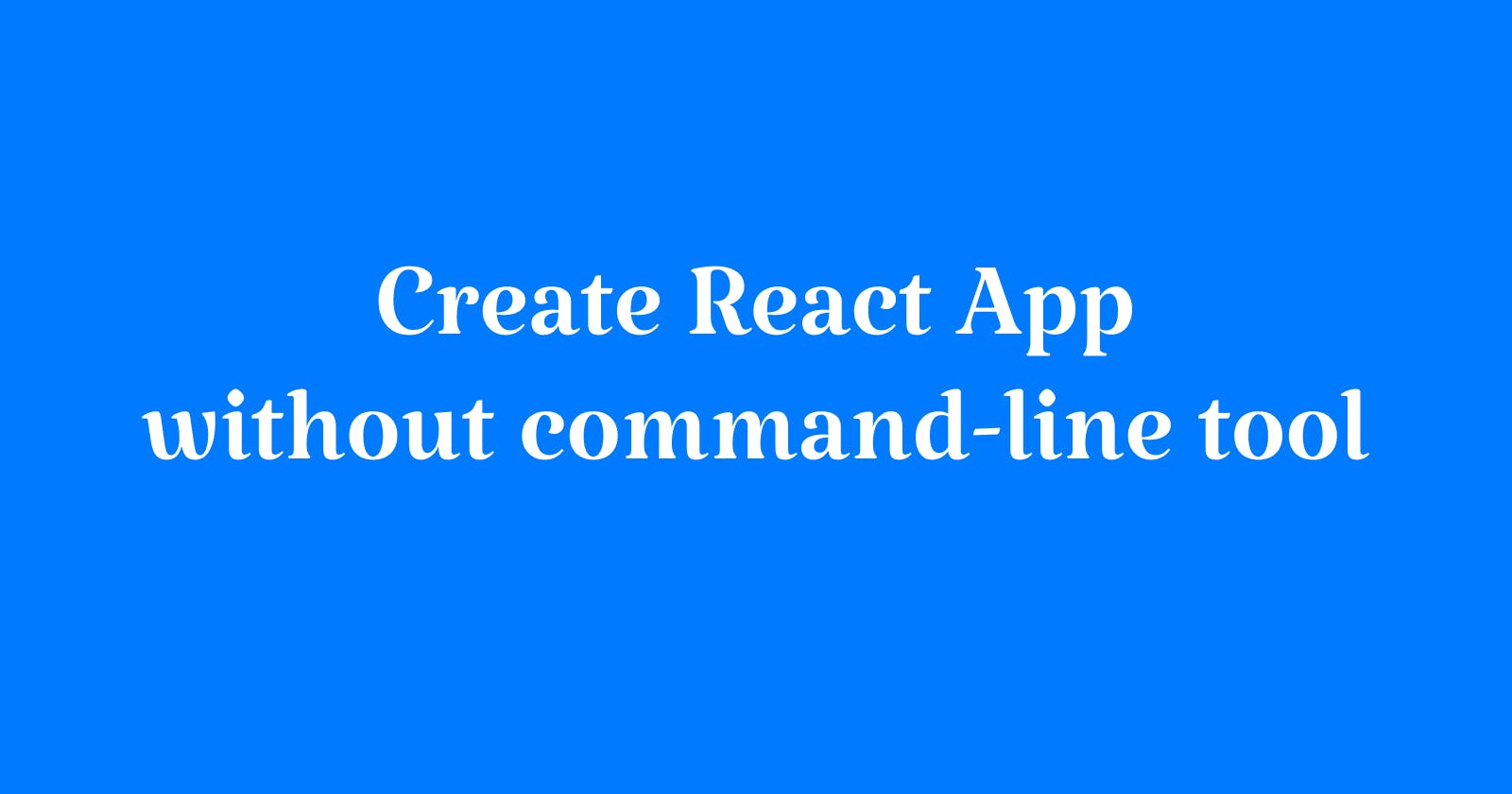Create React App without command-line tool
Create React Application using Babel, and Webpack without using create-react-app
Hey guys, Today I'm going to initiate a React project without using create-react-app CLI tool, we are going to use Webpack and babel today ...... yeeee Let's get started.
Steps
Initiate the project using npm
Install react and react-dom
Install Babel for JS transpiling
Install Webpack modules and create the configuration
Add basic files ( index.html, index.js, App.js )
Run the application 🤩
Add TypeScript
Initiate the Project
To initialize the project we can use npm-init , it will ask a few questions from you to get better description about the project or else you can use npm init -y to get all the default settings
Install react and react-dom
You have created an empty node application, now we need to install all the necessary dependencies to the project to convert this project as a react application. To make this a react application we need to install react and react-dom modules that provide react and dom functionalities.
yarn add react react-dom
Install Babel for JS transpiling
Now we are going to install the required Babel modules, Babel is a tool that compiles the ES6+ features to old versions of JS, and also the React JSX need to compile to a code that our browsers understand.
yarn add -D @babel/core babel-loader @babel/preset-env @babel/preset-react
Let's create the Babel config .babelrc file in the root folder
{
"presets": ["@babel/preset-env", "@babel/preset-react"]
}
Install Webpack modules and create the configuration
Now we need to install Webpack, which is a static module bundler for JS applications. Webpack is the most used JS bundler.
yarn add -D webpack webpack-cli webpack-dev-server html-webpack-plugin
Let's create the Webpack configuration in the root
const path = require("path");
const HTMLWebpackPlugin = require("html-webpack-plugin");
module.exports = {
entry: "./src/index.js",
output: {
path: path.join(__dirname, "/dist"),
filename: "bundle.js",
},
plugins: [
new HTMLWebpackPlugin({
template: "./src/index.html",
}),
],
module: {
rules: [
{
test: /.js$/,
exclude: /node_modules/,
use: "babel-loader",
},,
],
},
};
Add basic files ( index.html, index.js, App.js )
Now it is the time to implement the react, let's initiate the react by creating the index.html index.js and App.js files under src folder
index.html
<!DOCTYPE html>
<html lang="en">
<head>
<meta charset="UTF-8" />
<meta name="viewport" content="width=device-width, initial-scale=1.0" />
<title>Document</title>
</head>
<body>
<div id="root"></div>
</body>
</html>
index.js
import React from "react";
import ReactDOM from "react-dom";
import { App } from "./App";
import { createRoot } from "react-dom/client";
const domNode = document.getElementById("root");
const root = createRoot(domNode);
root.render(<App />);
App.js
import React from "react";
export const App = () => {
return (
<div>
<h1>Hello World</h1>
</div>
);
};
Run the application
To run the application you need to add new scripts to the package.json file
{
...
"scripts": {
"start": "webpack-dev-server --mode development --open --hot",
"build": "webpack --mode production"
},
...
}
Let's run the local server 👑
yarn start
You can build the application in production mode by runing this
yarn build
Add TypeScript
Let's add TypeScript to the project
yarn add -D typescript ts-loader @types/react @types/react-dom
And Now we need to create the TypeScript config tsconfig.json
{
"compilerOptions": {
"outDir": "./dist/",
"sourceMap": true,
"noImplicitAny": true,
"module": "es6",
"target": "es5",
"jsx": "react",
"allowJs": true,
"moduleResolution": "node"
}
}
And let's update the Webpack configuration to use Typescript, This is the new Webpack config file
const path = require("path");
const HTMLWebpackPlugin = require("html-webpack-plugin");
module.exports = {
entry: "./src/index.js",
output: {
path: path.join(__dirname, "/dist"),
filename: "bundle.js",
},
resolve: {
extensions: [".tsx", ".ts", ".js"],
},
plugins: [
new HTMLWebpackPlugin({
template: "./src/index.html",
}),
],
module: {
rules: [
{
test: /.js$/,
exclude: /node_modules/,
use: "babel-loader",
},
{
test: /.tsx?$/,
exclude: /node_modules/,
use: "ts-loader",
},
],
},
};
And run yarn start you can see your application running on the browser .....
You can find my code here - https://github.com/dilipchandima/react-webpack-babel-blog

